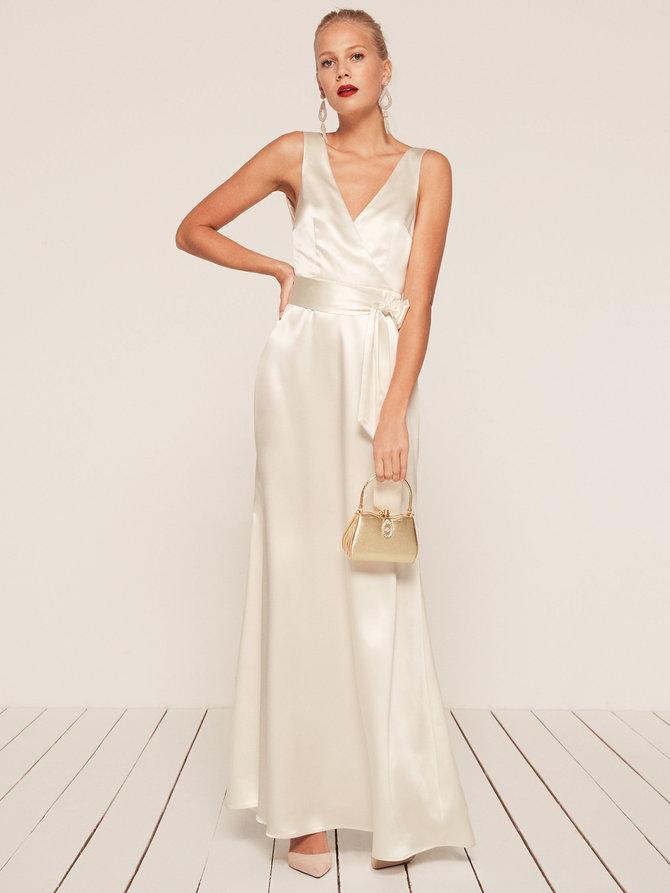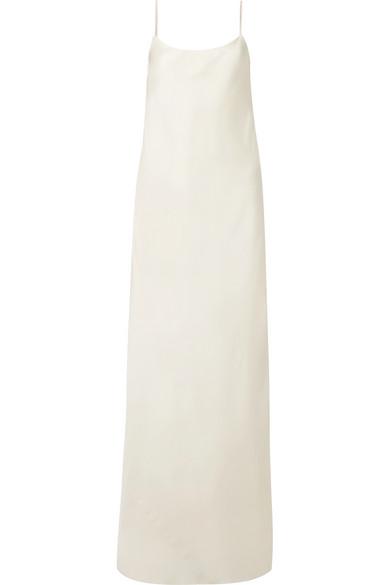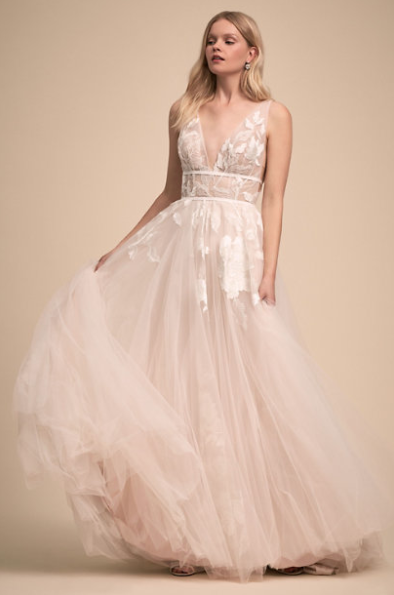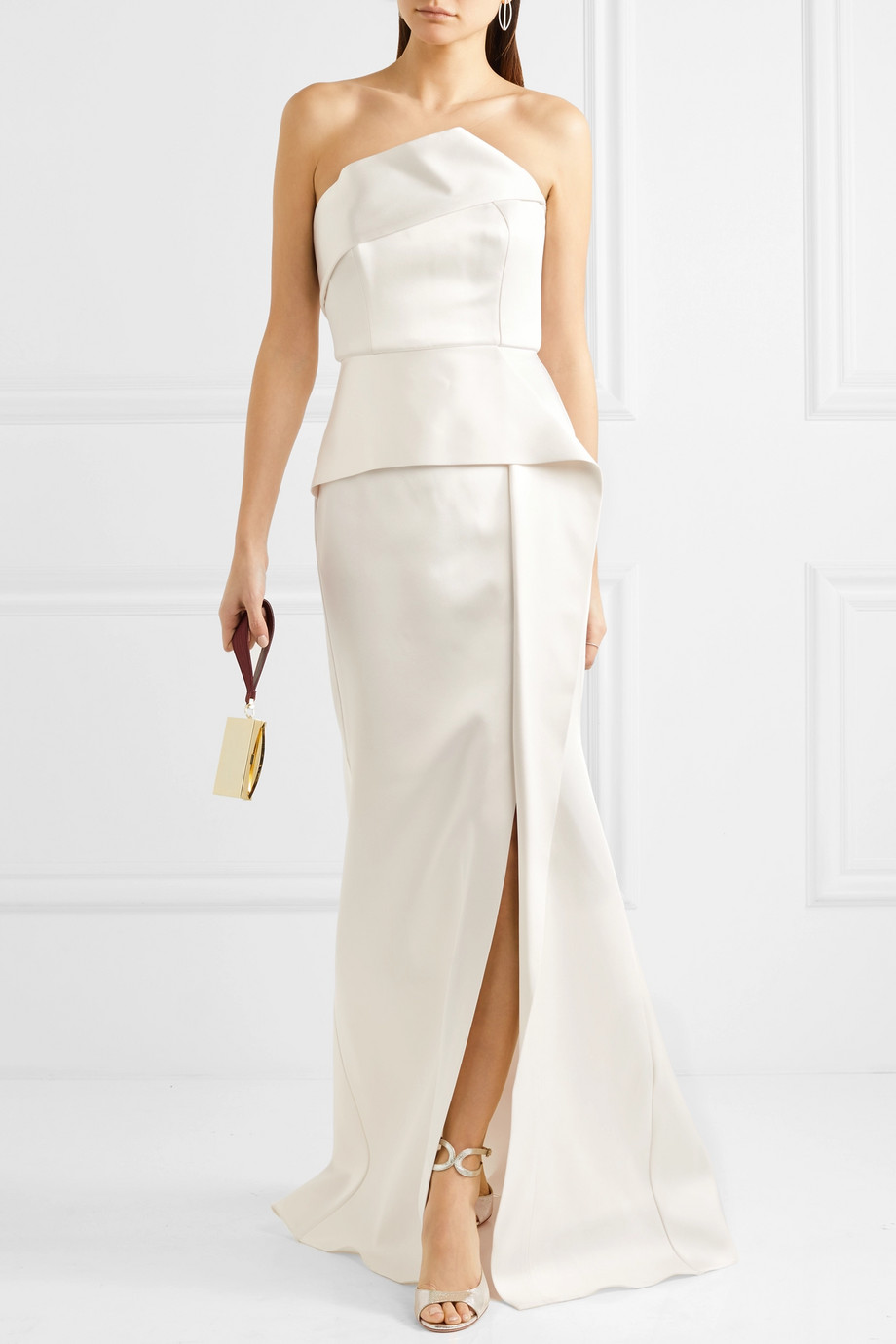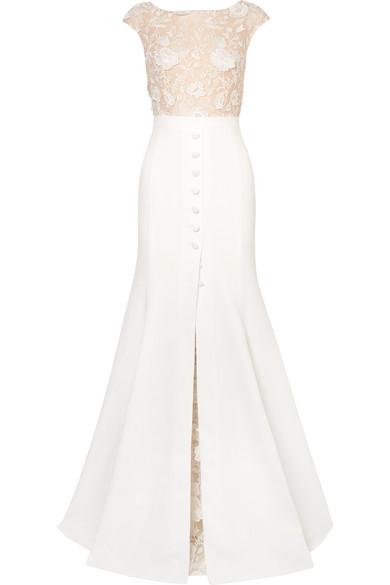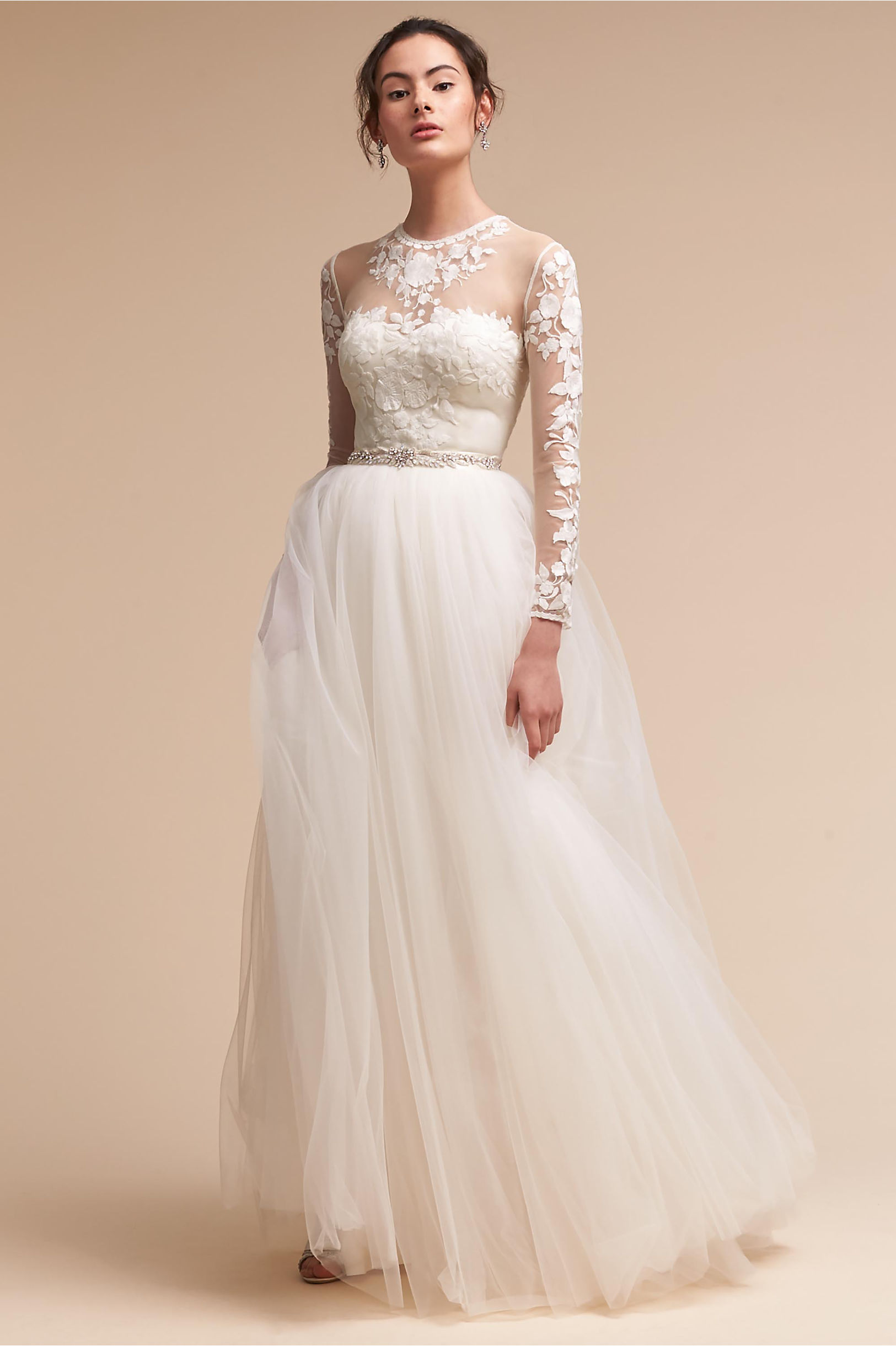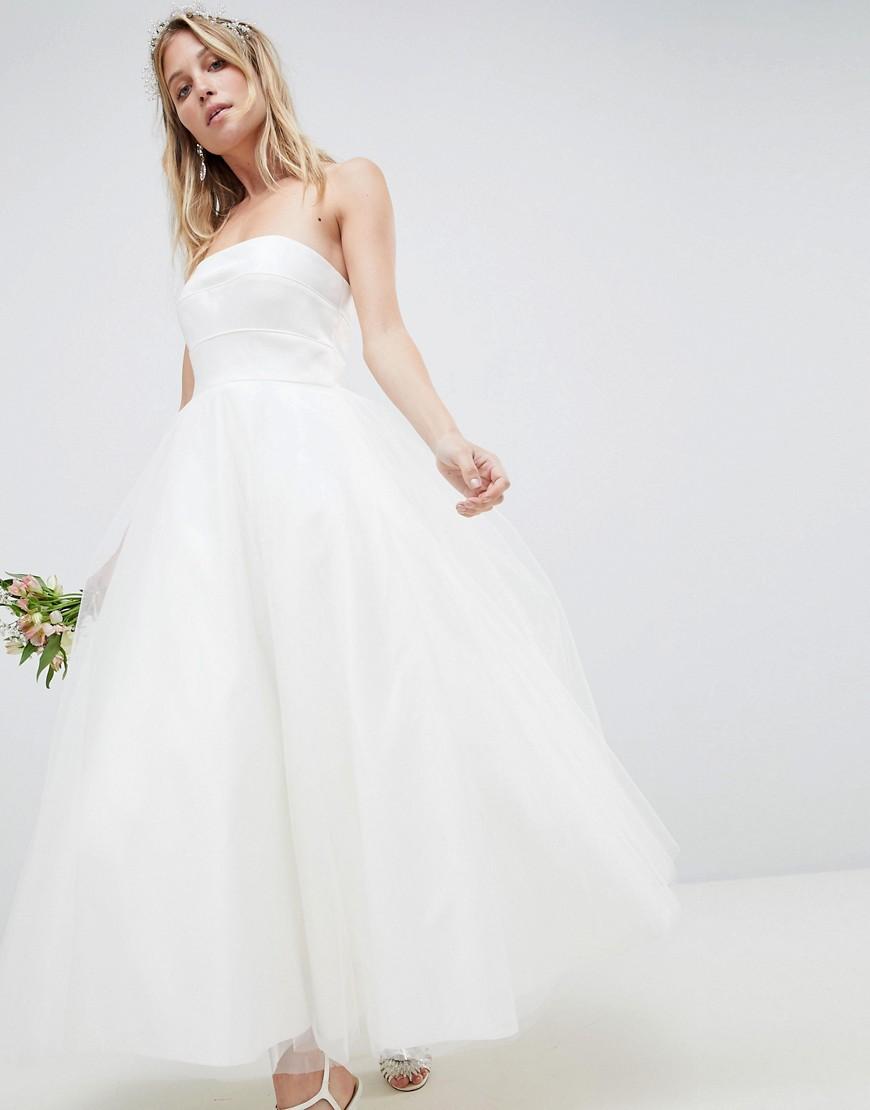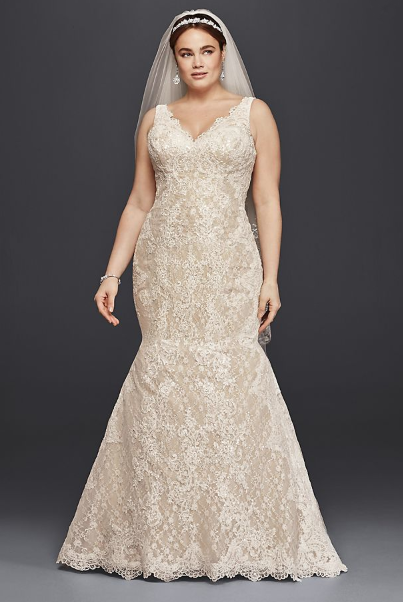The Top Wedding Dress Alteration Tips, According to the Experts

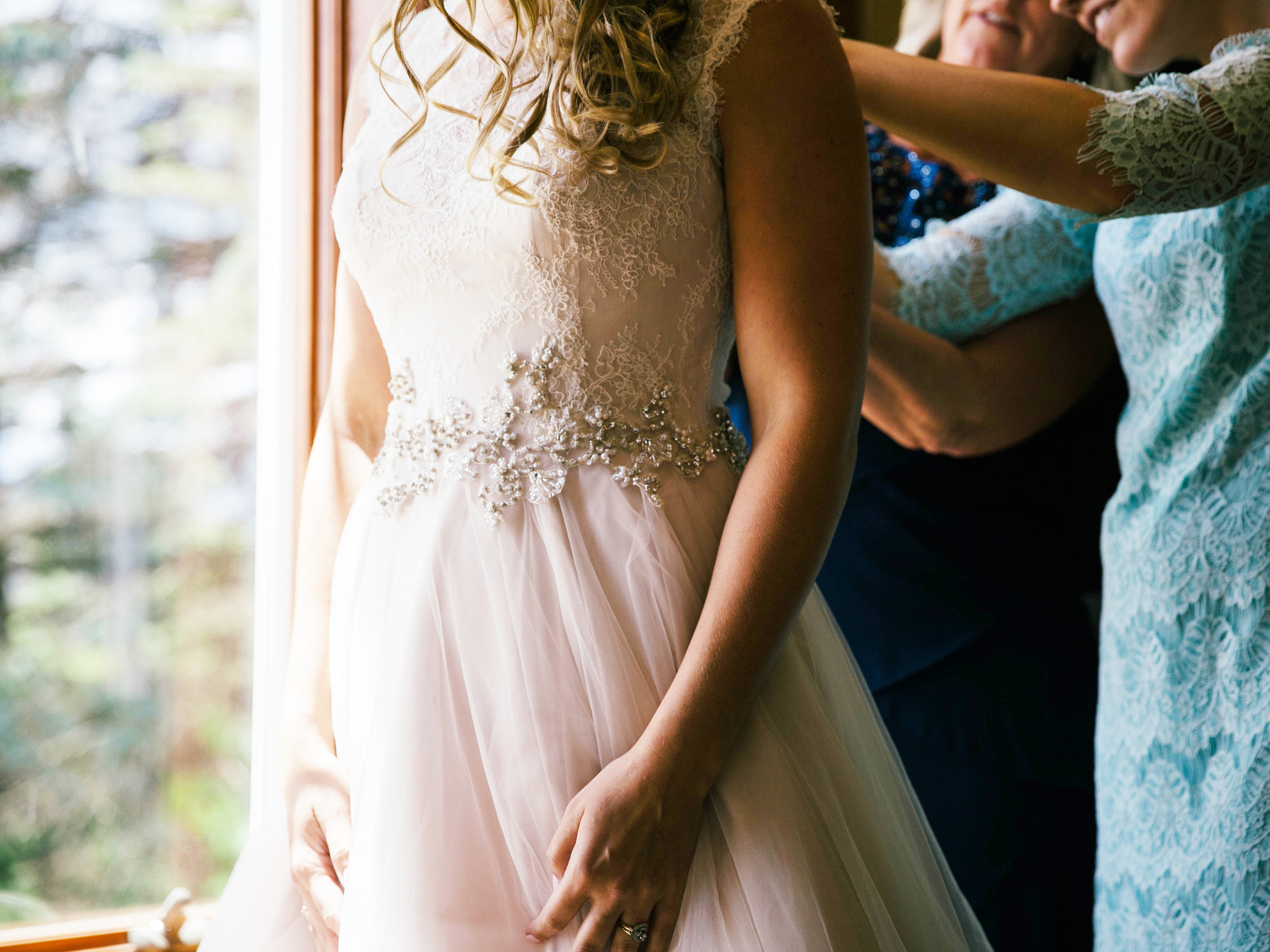
When it comes to the outfit you'll wear for your wedding, the fit is, in short, everything. And as Mary Mahon of the Chicago-based tailor shop, The Alterationist explains, "The difference between a bride in an ill-fitting gown and a bride in a well-fitting gown is like night and day—and it's evident on the bride's face." That's why getting adjustments done to your dress is very important. But what does a typically fitting look like? And what are some top tips every bride-to-be should know when it comes to an alteration appointment? To answers these questions and more, we tapped two experts about the eight things you must know about wedding dress alterations. So if you're planning a wedding, get ready to take notes.
1. Make sure alterations to your dress are even possible
It's so important to keep alterations in mind when picking your wedding dress—and there's one question you should always ask before you commit to buying it. "Ask the salesperson what alterations are possible," Kpoene' Kofi-Nicklin, owner and founder of Ette Tailor in Chicago explains. "If it seems like you'll want more changed [on the dress] than taking it in and shortening the hem, you may want to keep shopping."
Mahon shares a similar tip, explaining that it's important to keep in mind that alterations are mainly about the fit, such as fixing a gaping bustline or getting a little extra space at the waist or hips. "Things like replacing a zipper with a lace-up corset, making an A-line skirt a mermaid, adding a sheer illusion neckline—these changes veer into design/construction territory," she adds, noting that many tailors won't take on a project if it's not their specialty, leading us to tip two.
2. Research the tailor beforehand
Do research on some alteration professionals in your area (and make a list of your top five), taking note of their specialties. Per Kofi-Nicklin, "Check that they specialize in bridal and formalwear."
3. Stay on schedule
Schedule an adequate time for all alterations to be made before your final wedding date. Mahon explains that three appointments are usually enough, adding, "I like to have the first fitting about three months out from the wedding date, and the final [one] about two weeks out."
4. Be mindful of your weight
Once you start your alterations, it's important to maintain a consistent weight. "Having our clients [lose] weight for their weddings is a major stress factor for seamstresses, and it means we have to do a lot of alterations twice, which means the client has to pay for the work twice," Kofi-Nicklin says.
5. And don't forget to budget accordingly
Oftentimes, brides forget to factor the additional work a gown may need into its total cost—and simply put, alterations can add up. Both experts suggest budgeting at least $500 for adjustments on the dress, but depending on the alterations that need to be done, that number can be slightly higher or lower
6. Speak up
When you go into your initial fitting appointment, it's important to make your alteration preferences clear. "Many alterations shops are more old-school and don't alter for a modern fit, so make sure you're telling your fitter your hopes and dreams for how the dress will look on you," Kofi-Nicklin explains.
7. Bring any undergarment you plan on wearing (and your shoes, of course)
There are several things you should bring with you to your first alteration appointment, including any undergarments you plan on wearing on your wedding day (think Spanx, a sticky bra, a bustier, etc.) and, of course, your bridal shoes, which are essential in properly marking the hem. "If you have your veil, jewelry, [or] belt as well, there's no harm in bringing them along," Kofi-Nicklin adds.
8. Don't bring an entourage to your alteration appointment
While sure, it's nice to bring your friends and family members with you to your alteration appointment, it may be best to go alone (or with one other person). As Kofi-Nicklin explains, the initial fitting is "our only chance to make sure we are on the same page. When you bring along multiple people, you open yourself up to too many opinions, which can derail a fitting and throw everyone off balance, and you run the risk of the most important voice not being heard: yours."
Instead, she suggests bringing the "crew" with when you pick up the dress. "They can learn how to help you get into it, how to do up the bustle, and how to be there for you on the actual day."
Shop Wedding Dresses for the Season
Next up, check out expert tips on the proper etiquette of trying on wedding gowns—and yes, there's such a thing.

Eva Thomas is a senior editor at InStyle, with nearly 10 years of experience as a fashion journalist. She has worked in fast-paced newsrooms, covering everything from Wholesale Replica Bag fashion trends to notable beauty launches. When she's not experimenting with bold fashion trends, trying on clothes for herReplica Store fitting room series, sharing style hacks, or testing new skin care devices, she’s busy tracking down the best celebrity looks, interviewing trend and beauty experts, or texting her mom about her favorite new products. Eva’s conversational writing style makes her a go-to for fun, informative advice—think of her as your in-the-know BFF who’s always ready to share her expertise on all things fashion, beauty, and celebrity.
